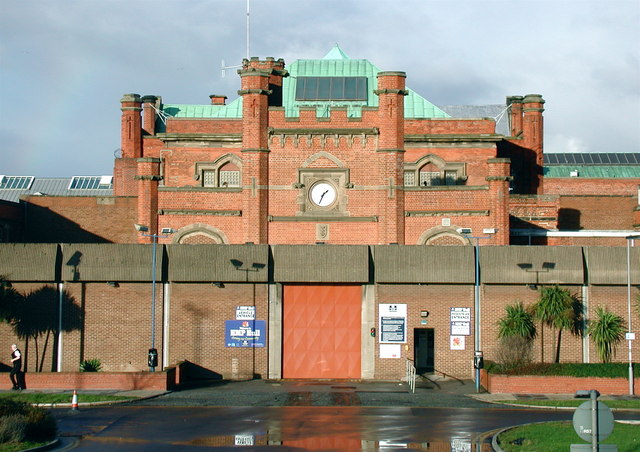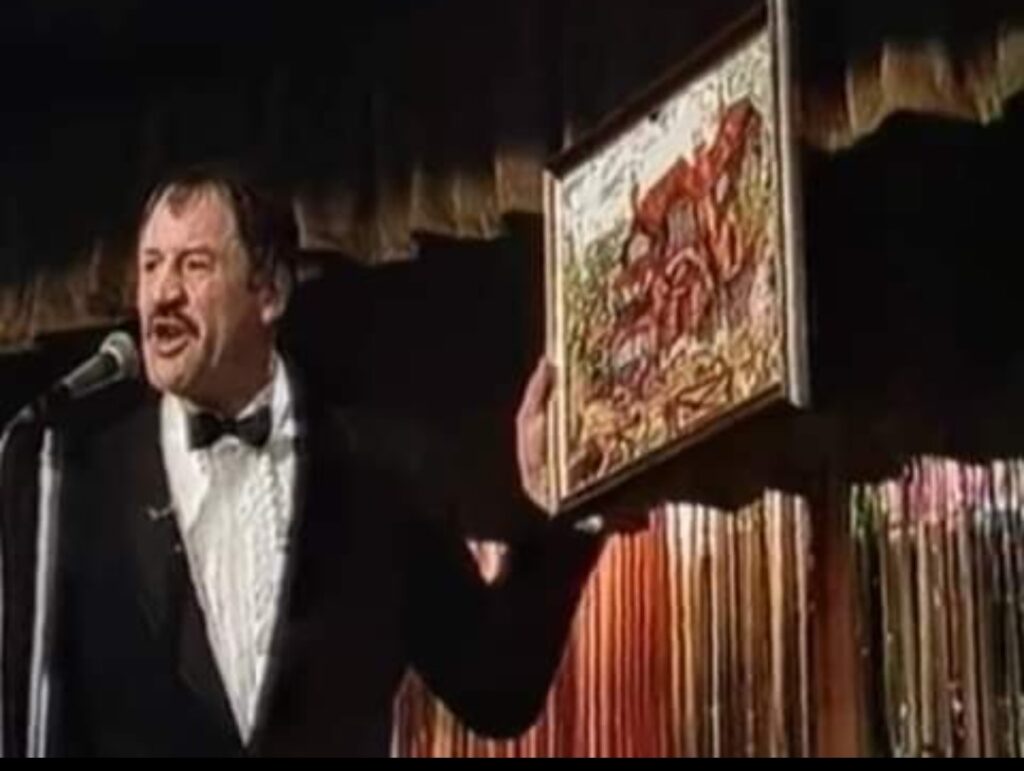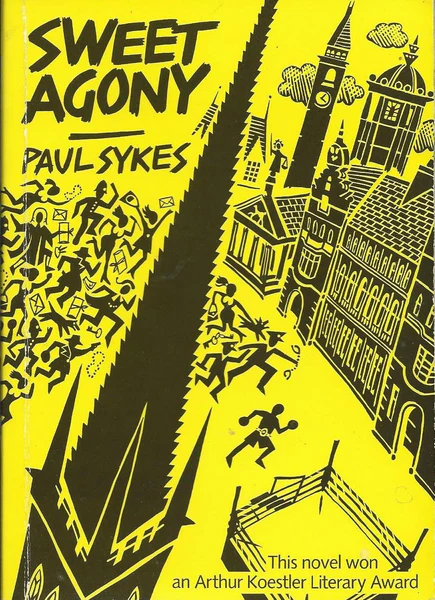Sweet Agony & At Large
The 1980s
Two monumental events occurred in 1990 that propelled Paul back into the public spotlight. He’d spent most of the 1980s behind bars, but the year 1990 was to be a rewarding year for him. After having served half of his sentence for intimidating a union official, between the years 1984 and 1985, Paul travelled to places like Russia, China, India, Malaysia, Singapore, and the Ivory Coast. How he managed to get to these places is a mystery, but it was all likely paid for via criminal endeavours.

Upon his return to England, he was sentenced to thirty months for burglary and assault, with three-and-a-half-years added when he decided to hospitalise two prison physical-education teachers. Due to his unruliness within the prisons, he was one of eight convicts deemed the most serious of offenders that were placed on a newly formed special unit at HMP Hull.
HMP Hull’s Special Unit

This special unit was seen as a highly controversial experiment that had its many detractors. The idea was that they could reform these volatile inmates by approaching them softly and without challenge. They weren’t reprimanded for things like verbal abuse or disruption – instead they were spoken to in a calming manner that avoided escalation.
It was an attempt to break the pattern of their offending, treat them more humanely, and change their outlook on prison authorities. Old tactics used to deal with these offenders – restraining them and throwing them in segregation – were to be used as a last resort.
Some were sceptical and thought it destined to fail, these weren’t men who could be managed peacefully. Others thought it must be given a chance because the old ways certainly hadn’t deterred their defiance. It garnered so much intrigue that the BBC was granted special permission to film there and observe the unit’s unique approach.
Danger Men

This documentary, “Danger Men”, aired in 1989. Paul Sykes had a brief segment on the film. On it, he was being returned to the unit after spending time in segregation for abuse of a guard. After his return, in a short scene where Paul explains his actions to one of the unit’s officers, he steals the limelight from all the other prisoners featured on the film.
He comes across as articulate and intelligent whilst he explains his reasoning for what he did. Apparently, the guard had been goading him, abusing his power, trying to instigate a reaction from Paul. Paul had merely given the guard what he wanted. The initial case of assault on the guard had been lessened to abuse and Paul believed he was in the right for what he did. It is a classic example of how charming Paul could be, he leaves you feeling in agreement with his actions.
It was after this documentary aired that something serendipitous happened to Paul. Producer Roger Greenwood must have watched “Danger Men” and decided he would like to make his own film centred on the enigmatic ex-boxer. He was due to be released from HMP Hull and there was plenty to find out about the con.
Paul Sykes At Large
The documentary he made, “Paul Sykes At Large”, which was released on Yorkshire TV in 1990, is still watched and talked about to this day. People around the world know of Paul because of it. It is a golden piece of television that could never be recreated.
It is the best display of the man’s complexities. It is riotously funny, entertaining, shocking, sinister, and sad – all within the timeframe of a meagre fifty minutes. It is instantly quotable, features interviews with Paul, his parents, and others close to him, and there are memorable scenes scattered throughout.
Take for example, the film’s first shot of Paul. He’s stood in his cell, wearing nothing but shorts, sprucing himself up in the mirror. At forty-three years old, he is still a monster of a man with his trademark moustache combed to perfection. He puts on his shirt and then begins his narration: ‘Av had ten-an-half-years for whacking screws and ten-an-half-years for whacking coppers, yeah. I’ve never taken a liberty in me life, I’ve belted a few people… on every occasion I was in the right, and it were them taking the liberties. And I did what John Wayne did, what any sane thinking man would, punched ‘em right in the fucking earhole.’
As he leaves his cell and struts down the wing, he continues to confess: ‘I’m an expert at violence, I’ve been at it all my life.’
This is many people’s first experience of Paul, and one which couldn’t deserve a more startling impression. If you haven’t seen the documentary, then I highly recommend it. For you to read this far, you must be interested in the man, and there is no better way to glean just how whacky he was than by watching that film.
From scenes of him sat in his garden describing how he’s the only man to swim the straights of Johor whilst punching sharks in the earhole, to ones of him at a local charity fundraiser auctioning a serial killer’s painting (by Patrick Mackay, whom he was friends with behind bars) – it truly is a timeless classic that everybody must witness to believe.

Sweet Agony
One of the focal points of the documentary was his novel, which, at the time of filming, was in the process of publication. In one scene, we see him typing sentences onto an old computer in HMP Hull. “Sweet Agony” is the name of the novel Paul was editing on that prison computer. It won the Arthur Koestler Literary Award in 1988, two years before its publication. Many regard it as Paul’s magnum opus – his greatest lifetime achievement.
It describes his life between the years 1977 and 1979 when he was leaving prison and his subsequent boxing career. It gives an insight into the way he thought and felt about his circumstances, how he was institutionalised, and struggled to cope on the outside.
When reading the book, you grasp how prison has changed him, how it changes so many others who have spent decades locked up, how it warps their views on society, whereupon everything becomes relevant to their time inside, how they compare even the smallest things to aspects of their incarceration, and how they never fully escape their cells.

One beautiful scene that struck me is when he visits Ryhill (the village where I grew up) and traverses the surrounding countryside. There he finds a multitude of magnificent lakes, thriving fields, and scenic country paths. He spots one lake which has an island in the middle of it, and an abandoned mansion is built on top of the island. Despite the admonishment of his friend who he was with at the time, he decides to swim towards this mansion, but when he does, vines in the water wrap around his limbs and hold him back, stopping him from reaching it.
This is a magnificent metaphor for his life. How he wanted to be good, how he wanted success and riches, but he was always held back by his demons, they always lurked within the deepest recesses of his heart. A plethora of vivid descriptions like this can be found within the book. The writing is exceptional in parts and highlights just how intelligent the man could be when he applied himself.
Questionable Desires
But there are aspects to the book which, by today’s standards, would be deemed condemnable and downright illegal. Aside from his boxing fights and trying to reintegrate into society, the novel’s other focus is his relationship with two fifteen-year-old schoolgirls, Cath and Wendy. Later in life, he married them both. Wendy being his second wife, Cath his third.
Not to excuse his actions, but times were different back then, however, it is shocking to believe that nobody was disgusted by this thirty-year-old man dating two teenage girls.
They both went to St. Thomas à Becket’s – the same Catholic high school where I was educated – and he describes how he used to wait outside the school to pick them up after they’d finished for the day.

Nobody batted an eyelid at this. His friends also expressed their love of virginal girls. Paul’s excuse was that he’d never matured mentally. He’d been locked up since he was seventeen and still had that same mentality, therefore he related more to younger girls than women his own age.
But he knew it was wrong. He admitted it in writing. He said he was a nonce. So, diminished responsibility couldn’t be justified. He preyed on them, manipulated them, and toyed with their immaturities. He played them against each other; dated them both at the same time; revelled in how he tarnished their friendship, propagated jealousy, and made them hate one another.
Nowadays, he would have been abhorred by society and sent to prison for paedophilia, but back then, like we’ve seen with so many historic cases, this deviance was simply brushed under the carpet.
Grandiose Belief

Regardless, ten thousand copies of Sweet Agony were published in 1990 by local publisher, Lofthouse Publications, and Paul trolled around Wakefield selling his book to whomever he could.
In “Paul Sykes At Large”, he discusses how well he thinks the book will perform. He sits there in an unusually calm and reflective manner and says: ‘I must have been in the nick with three million cons, and another hundred thousand screws, and I think they’ll buy it just to see if they’re in it for a start. Oh, I think it’ll burst on the scene like “The Virgin Soldiers,” “Saturday Night and Sunday Morning”. Both first-time books, they were both autobiographical. You know, Alan Sillitoe, and Leslie Thomas, and they’re both well-established authors now. I think it’ll burst on the scene in that similar vein.’
Cut to his mother, Betty, sat on her sofa at home: ‘He thinks he’s somebody, but he’s not. He’s just somebody who’s been in prison all his life, and there’s nothing clever about that.’
Well, it seems she was right. In his lifetime, after the rollout of those first ten thousand copies, the book didn’t receive any further prints. Something which Paul wasn’t too happy about because he assaulted the publisher after he refused to make more.
Failed Success
His time in the spotlight was over once again. That little glimpse of fame he received in 1990 wasn’t to withstand. Like so many other famous artists, his work received its greatest recognition upon his demise.
He faded back into obscurity. Now in his forties, with his book a failure and no idea how to make a steady paycheck, his life spun out of control, he began to drink more and more, until eventually, he was drunk every day.
Paul Sykes’ reign of terror – his notoriety as a hard man – was almost over. His downfall was imminent. Alcohol would become his only solace. And it would transform him into a different nuisance than Wakefield had previously known.
2 responses to “Paul Sykes – A Life of Chaos – Part 5”
[…] Previous… Next… […]
[…] Previous… Next… […]